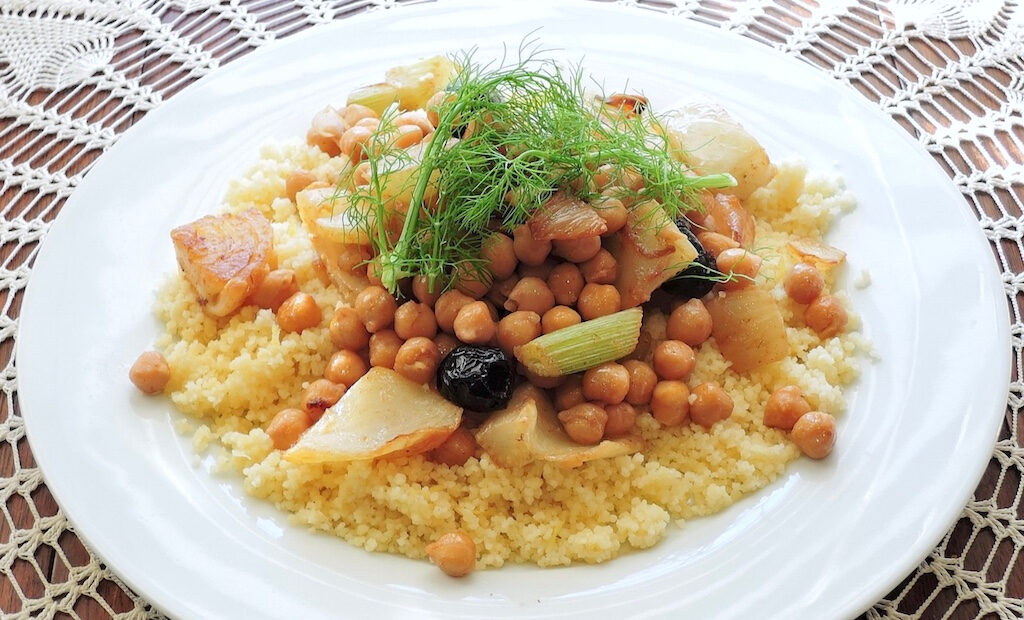Israeli cuisine 101: A beginner’s guide

When it comes to describing Middle Eastern cuisine, adjectives run a bit short, really. Mediterranean cuisine shares some of its characteristics, with dishes based on fresh and seasonal vegetables, healthy ingredients and a sustainable perspective of the cooking world. Middle Eastern food comes from a land ready to provide the most vibrant vegetables and the richest fruit, not to mention the amazing spices and the flavours that have managed to cross every possible border.
Israeli gastronomy, influenced by both Middle Eastern and Mediterranean cuisine, is one of the most delicious cuisines in the world. Here is a beginner’s guide, along with some ideas on on how to cook one of the staple ingredients in this cuisine: couscous.
The must-have ingredients list
First of all, it must be said that Israeli gastronomy is all about carbs and filling dishes. It is also worth mentioning that once one has a bite and allows oneself to explore all the flavours, the carbs won’t matter so much anyway!
Having said that, the way to approach it the Israeli cooking way is to experiment with some of the ingredients from this list that are not so familiar. Once the basics are grasped, it is not so different from what many in the UK already use. For example, it is very common to find a good mix of fresh herbs and the way to elevate the experience is to add fresh and seasonal vegetables.
Pantry products
- Couscous: Although many people think couscous is a grain, it is more similar to pasta and is made from wheat. Needless to say it is a staple and, as such, there are several types. Pearl couscous is probably the most popular.
- Chickpeas: Used by many to make hummus, chickpeas are very popular. However, Israeli chickpeas are not the garbanzo beans found in our local markets. Even though they can work in the same way, it’s worth trying to get some true Israeli chickpeas to get a genuine creamy hummus.
- Freekeh: the name is quite unusual, but it is just roasted wheat. It comes both cracked and whole and it is a great source of fibre. It’s used in salads or soups as a grain.
Spices
- Za’atar: Coming from the mint family, this comes both in the shape of a standalone spice and a blend. It is the leaf of the hyssop and it goes well in meat-based dishes. As a blend, it is combined with salt, thyme and other herbs.
- Baharat: This combines cinnamon with nutmeg, ginger and more, and it can be used for both sweet treats or savoury. It is a bit earthy and one can find different versions of it according to the region.
- Sumac: This is basically a ground berry and it can be used, for example, to top dishes. It is also frequently incorporated in soups or over meat. This is probably one of the easiest to find in a local shop.
Top popular dishes
This is a big question, as there are different answers depending on who is asked. However, pita has definitely made it to the top five list. What is pita? It is flat bread.
Simple as it sounds, pita can be halved and stuffed with anything – for example with some genuine hummus or with some pork. Add a blend of spices and it’s will transport the diner directly to the main streets of Israel.
Shakshuka is another popular meal, which is eaten for breakfast. It is as bold as it sounds and it consists of poached eggs soaked in spicy tomato sauce with basil leaves.
And hummus, of course, that yummy creamy paste made of chickpeas and plenty of garlic. Another very popular dish from chickpeas is falafel, which is actually considered one of the national dishes. They are now very easily found on street food trucks and they are usually eaten inside a pita bread.
Whatever the choice, one thing is clear: it’s hard not to fall in love with Israeli food!
The editorial unit




















Facebook
Twitter
Instagram
YouTube
RSS